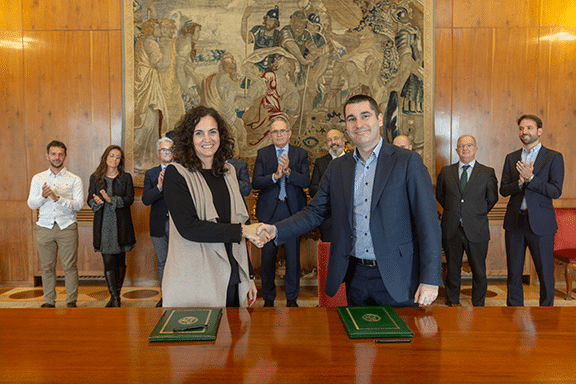5 years of Scientific Collaboration to Innovate in ‘Smart’ and Sustainable Agriculture

The University of Navarre and TIMAC AGRO España are strengthening their collaboration in the field of agricultural research to promote the scientific and technological development of more efficient and sustainable products.
The University of Navarra and the Groupe Roullier (represented by CMI Roullier and TIMAC AGRO España S.A) have signed a collaboration program contract to reinforce the agricultural research they have carried out since 2015. With over 5 years of collaboration, they seek to promote scientific and technological innovation to develop more efficient fertilizers with less environmental impact.
This new agreement provides for the promotion of innovative research projects. These projects should facilitate the application of research to agro-industrial production. They will involve the participation of teams from the University of Navarre’s Biodiversity and Environment Institute and researchers from the Roullier Global Innovation Centre (CMI Roullier). Together, they will participate in national and international research programs.
What are the implications for TIMAC AGRO?
José Maria Garcia-Mina, professor at the University of Navarra and scientific leader of this collaboration, explains “that this signature highlights the importance of joint research between companies and universities, and shows the synergies between fundamental research and applied research. They are two sides of the same coin. The scope of this research will enable us to develop new, highly effective fertilization solutions and strategies, and reduce the risks to the environment.
Smart, sustainable nutrition for the world’s fields
Performance and sustainability remain the pillars of this collaboration. By combining these two fundamental principles, the UNAV and the CMI will be able to develop a new generation of fertilizers and biostimulants.
Optimizing ‘smart’ fertilizers is on the agenda, as Mr. Garcia-Mina explains. “Plant roots secrete compounds to express their nutritional needs. Based on this natural process, we will study how to design fertilizers capable of reacting to these compounds to supply the plant with the nutrients it can assimilate. This would considerably reduce the problems associated with the harmful effects of excess nutrients in the soil, such as plant diseases or severe ecological and environmental disorders, as the excess nutrients filter through the soil and are carried off to groundwater, reaching lakes and springs.
